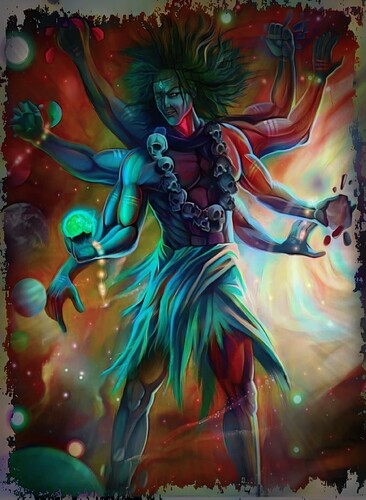This is good. I am not permitted to reveal the mantra unfortunately without the protocol of Shaktipat associated.
A note on the mantra here.
In India, there are two traditions - Vedic and Tantric. Both are ancient, parallel, and mostly complimentary to each other, with both borrowing from each other. While the Vedic lore was preserved with extreme purity avoiding any changes to the transmission, Tantric traditions considered themselves as active, living, growing schools and kept innovating and adding stuff. At times, these two schools were antagonistic to each other where the orthodoxy preferred the Veda while others preferred Tantra, depending mainly on the political wind of the day.
There was originally only one Gayatri mantra - the famous one - which invokes Savita or the Sun, who is visualized as the Supreme Being in Rigveda. This crown jewel mantra of the Veda is recited slightly differently based on which of the four schools of Veda one belongs. It is traditionally passed on from father to son. A great saint says that the spiritual accomplishments of the recent generations of practicing Hindus have dropped because (a) People do not practice Gayatri (b) The process of initiation, which is key to unlocking the power of mantra coming from an unbroken lineage has lost power - most fathers lack the spiritual energy and hence the mantra they pass on to their children also lacks power.
Now, Tantric groups, owing to political compulsions, wanted to gain acceptance from mainstream society. So, the culture of assimilation started where “Tantric Gayatri” mantras began to be formulated (associating with Gayatri, the core of the Vedic school, was imagined to grant Vedic status to these deities). These schools took the basic format of the original Gayatri, adapted it to their chosen deity (in this Kala Bhairava), and formulated these mantras. If one looks at scriptures, most of these mantras are not in any of the mainstream Tantra scriptures but are mostly popular from colloquial use.
In our school, other than the main Gayatri mantra, we don’t really pay much heed to the “Tantric Gayatri” mantras, and use only the actual mantras of the deity. For example:
The main mantra of Shiva is: oṃ namaḥ śivāya ||
His Gayatri is: oṃ tatpuruṣāya vidmahē - mahādēvāya dhīmahi - tannō rudraḥ pracōdayāt ||
While some schools recite the second mantra, most serious Tantric schools reject the latter as a latter addition and stick only with the original set of mantras associated with the deity. That said, it is still possible to connect to the deity using the latter by merit of focus/attention, and also probably because these mantras have developed some power due to faith and practice over hundreds of years.







